Arbiters of Style: The American Look
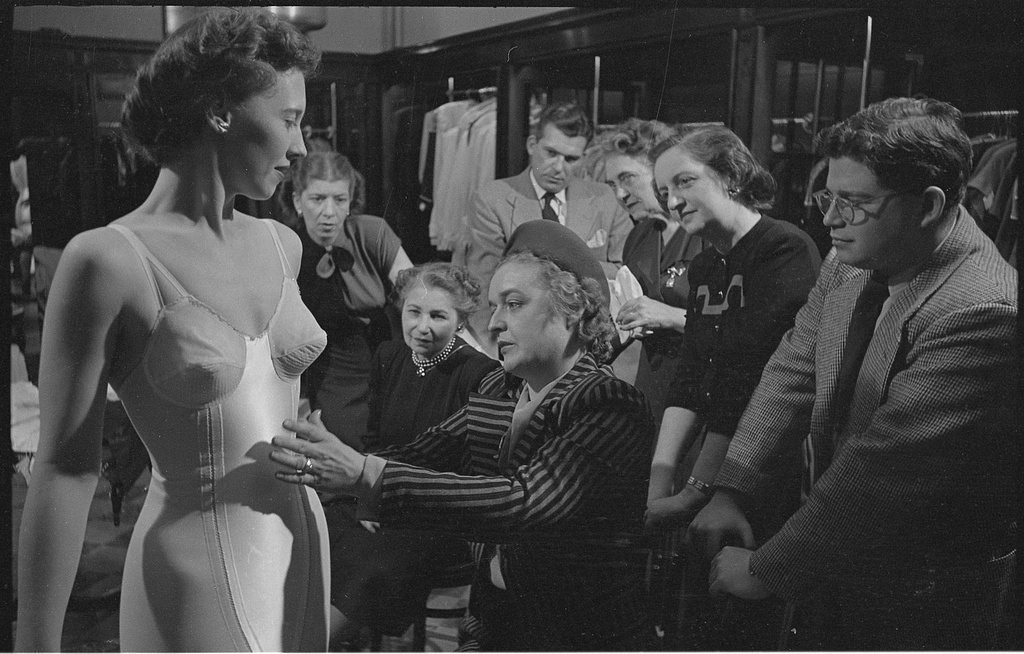
Traveling saleswoman by Stanley Kubrick for Look Magazine, November 25, 1949.
For pretty much the entire history of the United States, apparel designed in America was (for the most part) copies of variations on designs from Paris. Then, in the 1930s Clare Potter and Claire McCardell started designing apparel that would change both the world of fashion and who decided what was fashionable.
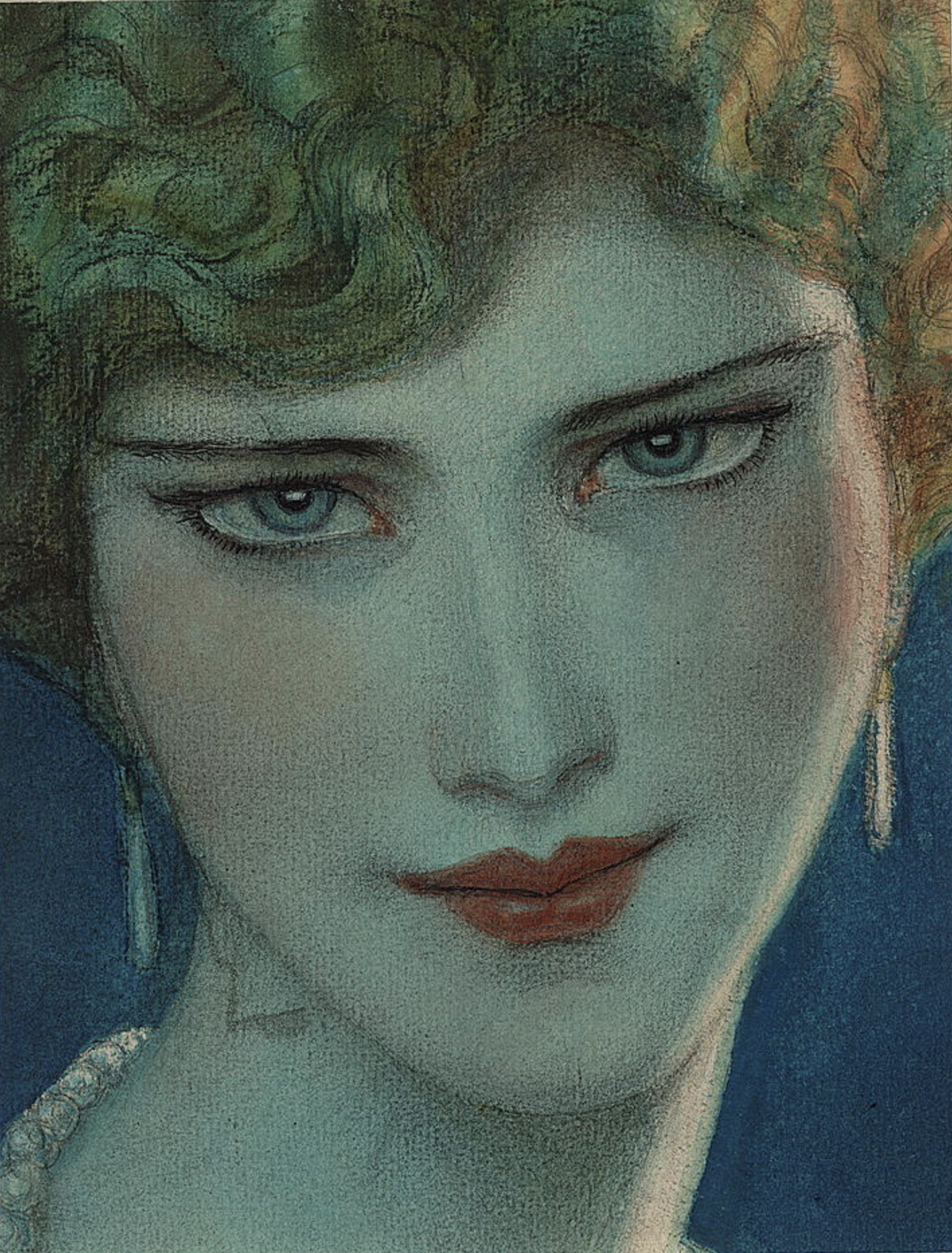
Face of blonde girl with earrings by T. Benda Wladslaw, April, 1923.
When the Second World War broke out, things began to escalate. It became increasingly difficult, if not impossible, to communicate with Europe, especially after Paris fell to the Nazis on June 14, 1940.
Americans began to look more locally to purchase clothing, and what US designers were creating was distinctively different from Parisian Haute Couture. This was in part because the American woman was an active woman, and once made available, sportswear quickly became a wardrobe staple.
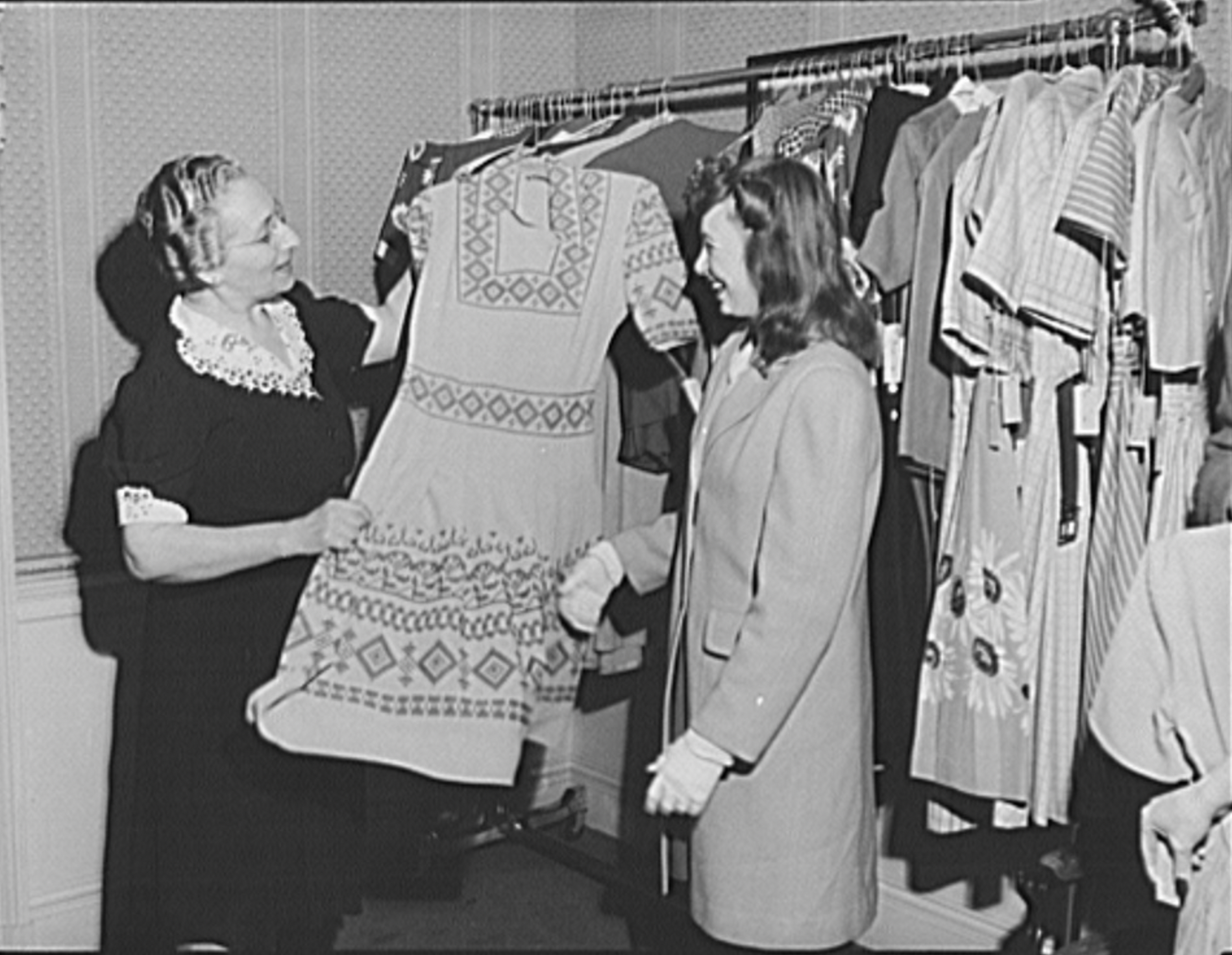
A saleswoman & client look at a dress at Saks Fifth Avenue, 1942.
Denim, cotton, and jersey—fabrics associated with comfort and ease—became sought-out, instead of the less comfortable, more formal styles which had dominated the inter-war era. In 1949, LIFE reported that separates made up approximately 30% of clothing sales in the United States that Fall, which was then an all-time record.
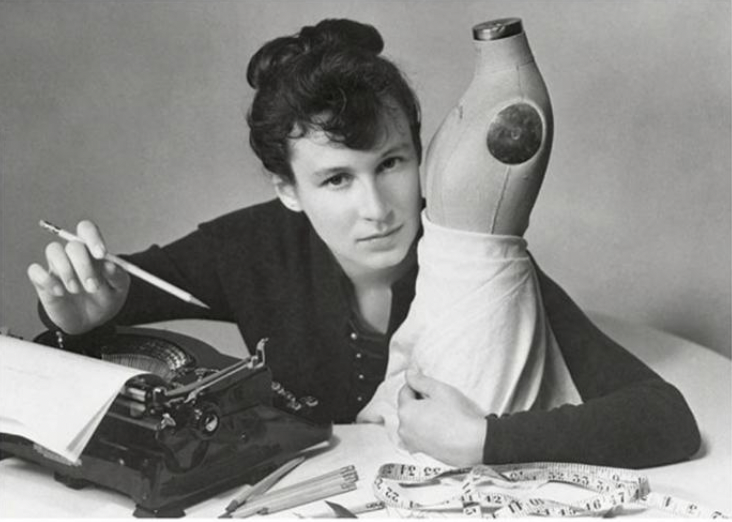
Elizabeth Hawes, photographer unknown, 1942.
Also, American designers were, unlike their Parisian counterparts, designing clothing that would accommodate larger (and smaller, i.e., petites) sizes, and, once WWII fabric rations were lifted, American designers began to compete with houses like Dior (and his New Look) over what was considered stylish.
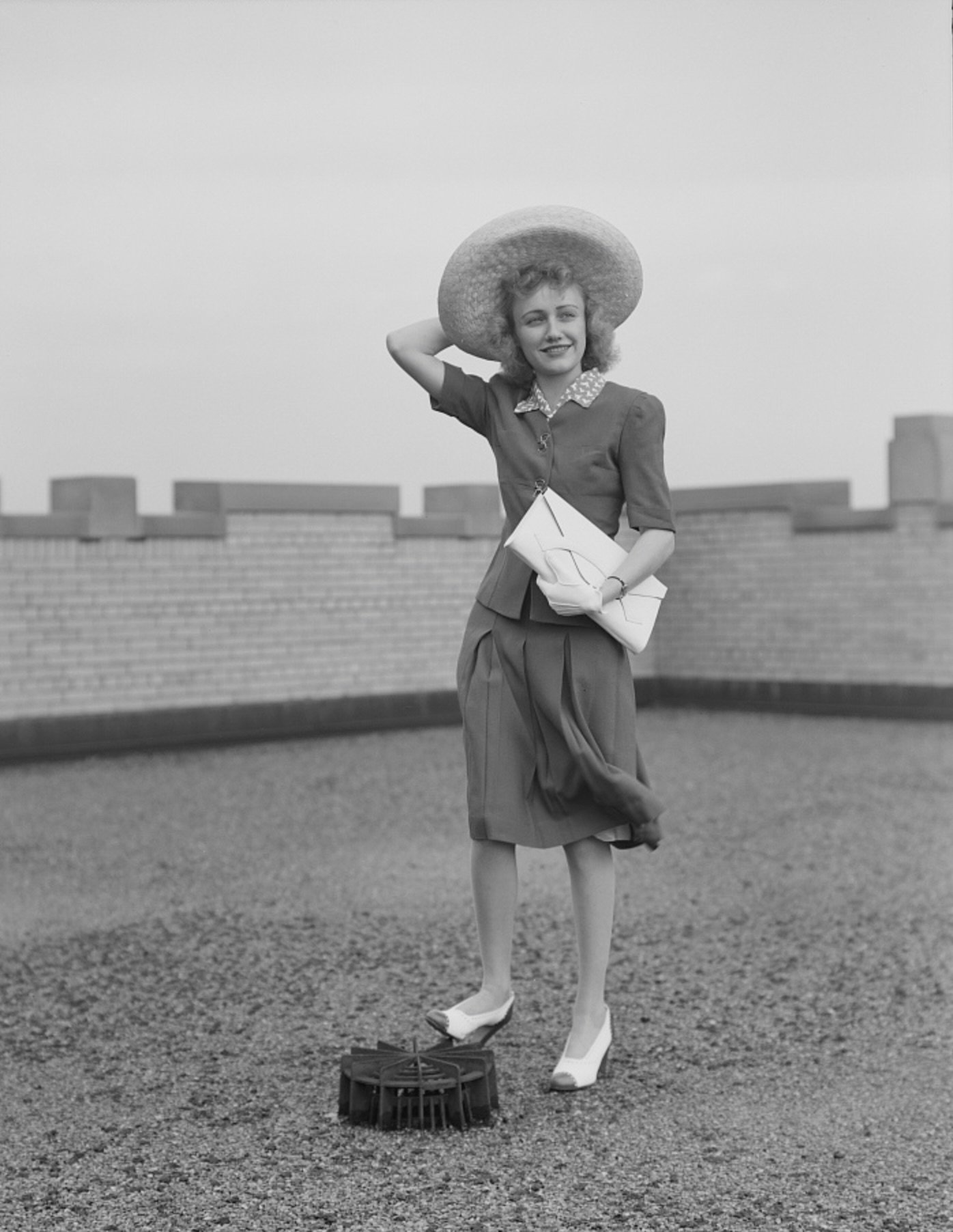
Fashion show by the Chrysler Girls' Club. By Arthur S. Siegel, 1942.
In the 1950s, with WWII in the past, the United States began to experience an unprecedented post-war economic boom. With more spending power and with the increasing popularity of American-designed separates (Bonnie Cashin called this “the Layered Look”), suburban American ladies began to influence the fads and trends which in earlier years had belonged solely to Paris.

Dress by Elizabeth Hawes. Photographer unkown, circa 1940.
It wasn't just adult apparel. A new subgenre emerges; teenage style, this is when literal sizing for younger body types became a thing.
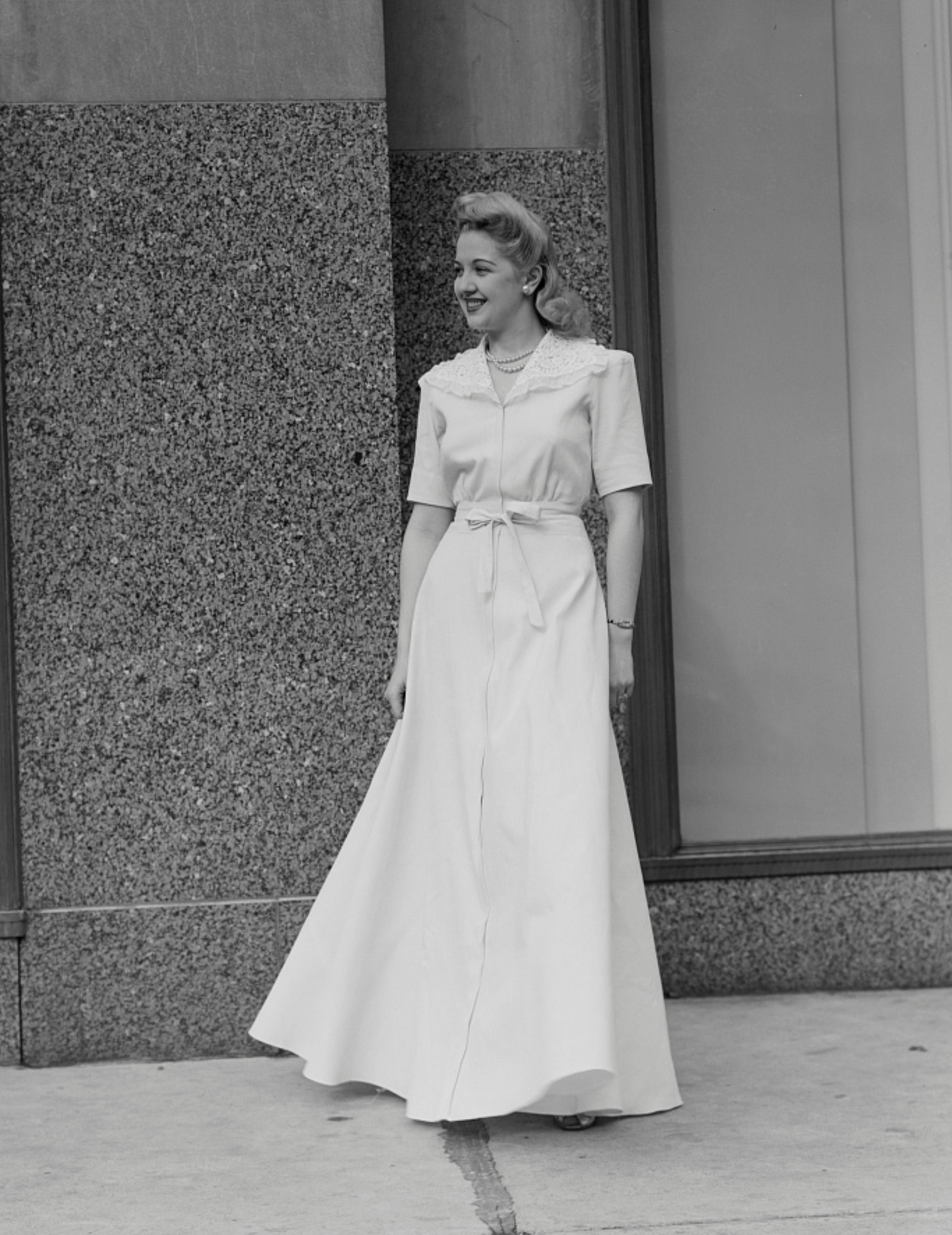
Fashion show by the Chrysler Girls' Club. By Arthur S. Siegel, 1942.
According to Women's Wear Daily, the kids “didn’t leave home without their poodle skirts, twinsets, scarves, Peter Pan collars, blue jeans, leather jackets, bobby socks and anklets.” This is the same era when it became popular, starting (probably) in California, for adult women to wear jeans, and Levi’s became fashionable with women for the first time.
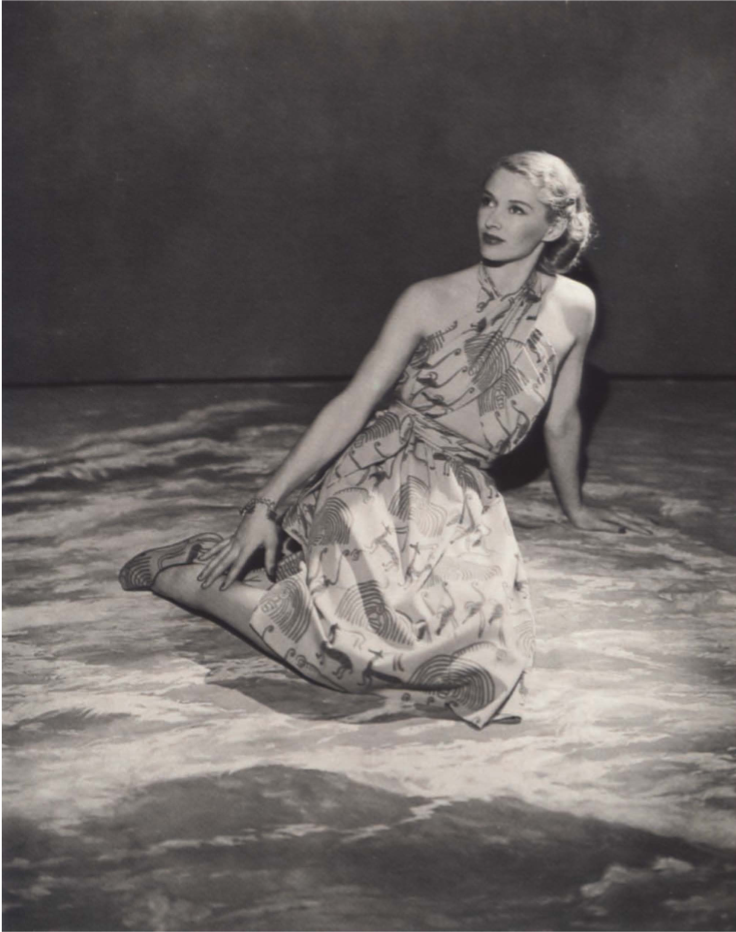
'Sport Frock' by Clair McCardell, photographer unknown, circa 1945.
Many of the first famous American designers were women, several of whom lived and worked in California or New York. There are names you might be familiar with today; Louella Ballerino, Bonnie Cashin, Tina Leser, Elizabeth Hawes, Claire McCardell, Vera Maxwell, Clare Potter, Carolyn Schnurer, and Joset Walker. These ladies intimately understood the desires of the American woman, and what she needed from her wardrobe.
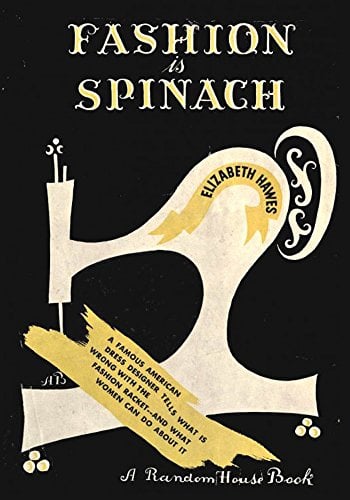
Fashion Is Spinach, by Elizabeth Hawes, Random House, 1938.
Each of these women, and of course many other American designers of their era, made apparel in a way that was brand new, with less formality, more ease, more fun. When these designers were working, they made the world change faster than might have been possible at any other, previous period in American history.
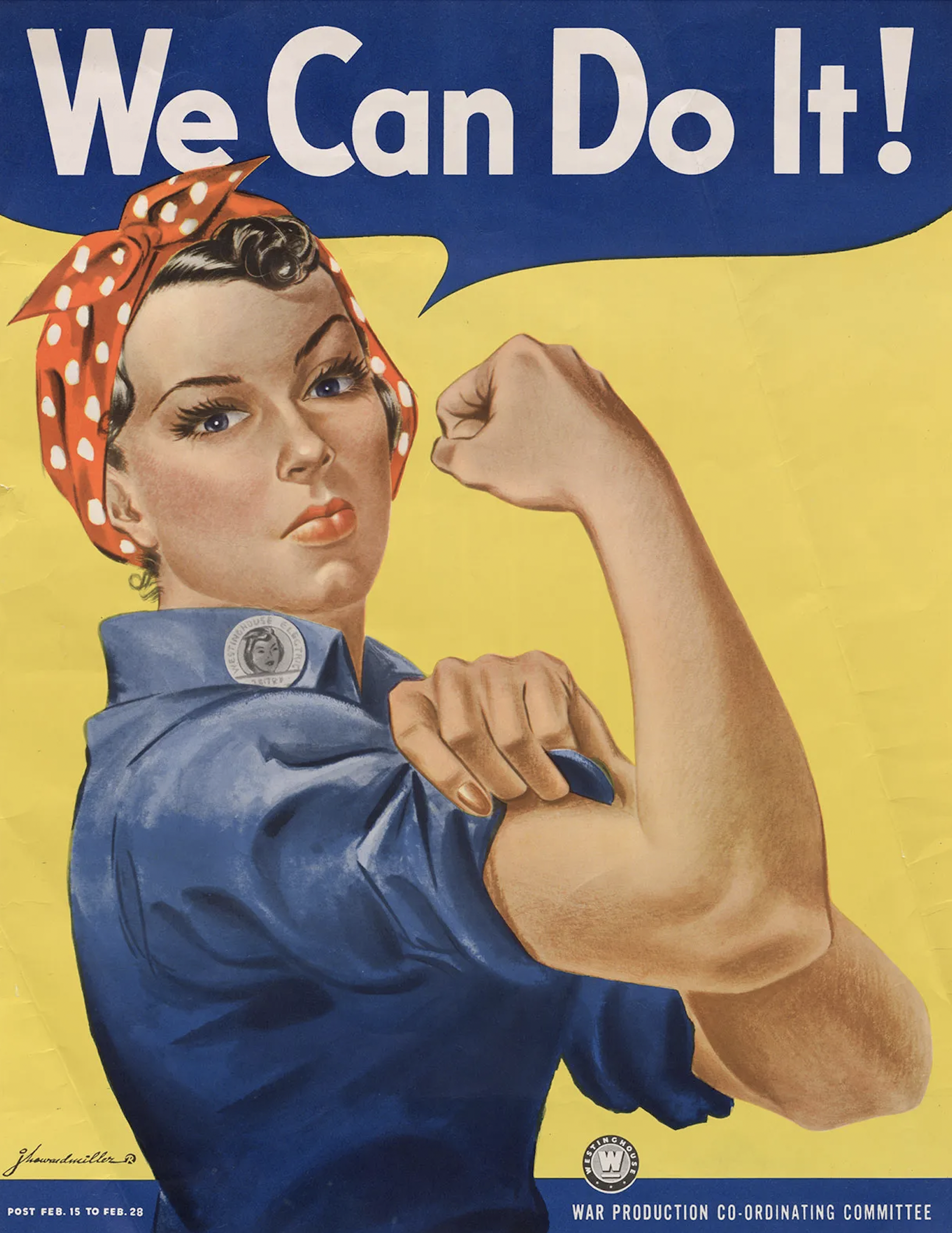
"We Can Do It!" poster by Howard J. Miller, 1942.
Of course, they did not do it alone. It had to be a team effort, to change the way Americans saw its fashion designers. Up until this point in time, according to the Huffington Post, “clothing labels in the U.S. only carried the names of manufacturers, newspapers didn't feature fashion pages, and few reporters cared about the subject beyond their own closets."
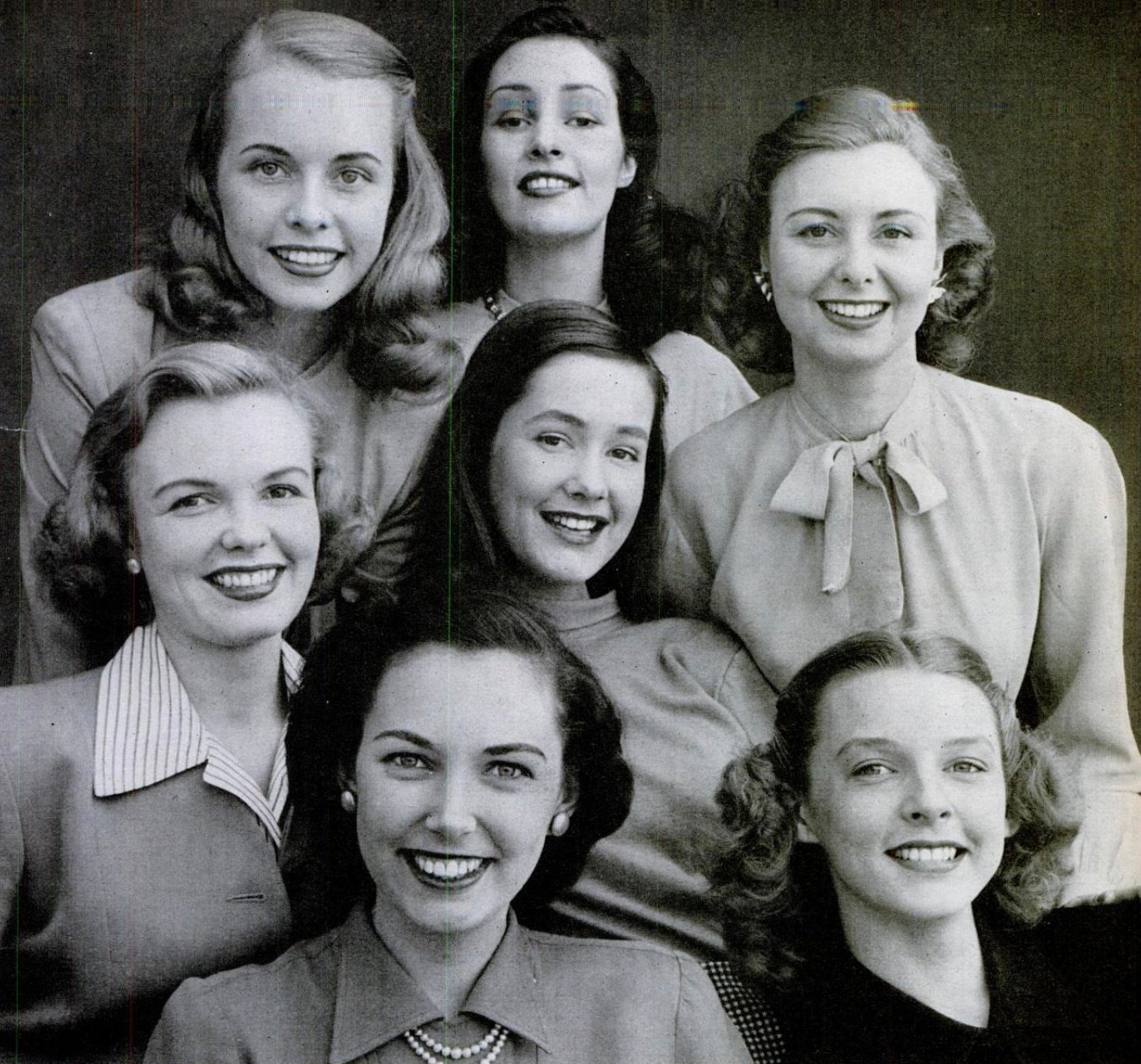
"What is the American Look?" LIFE Magazine, 1945. By Nina Leen.
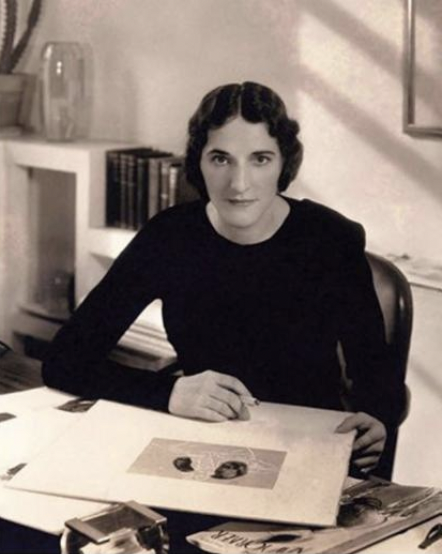
Dorothy Shaver, circa 1937, photographer unkown.
In the 1930s and 1940s, Dorothy Shaver, the first woman in the United States to head a multimillion-dollar company, (Lord & Taylor) made a concious decision to dedicate her efforts to supporting American designers. McCardell, Cashin and Maxwell were all first seen in Lord & Taylor’s flagship New York City Store, which led to other Fifth Avenue windows. Shaver was successful, in no small part because of her contemporary, Carmel Snow, who in the late 1930s was the newly appointed Editrix-in-Chief of Harper’s Bazaar and was also working to promote American designed fashion.
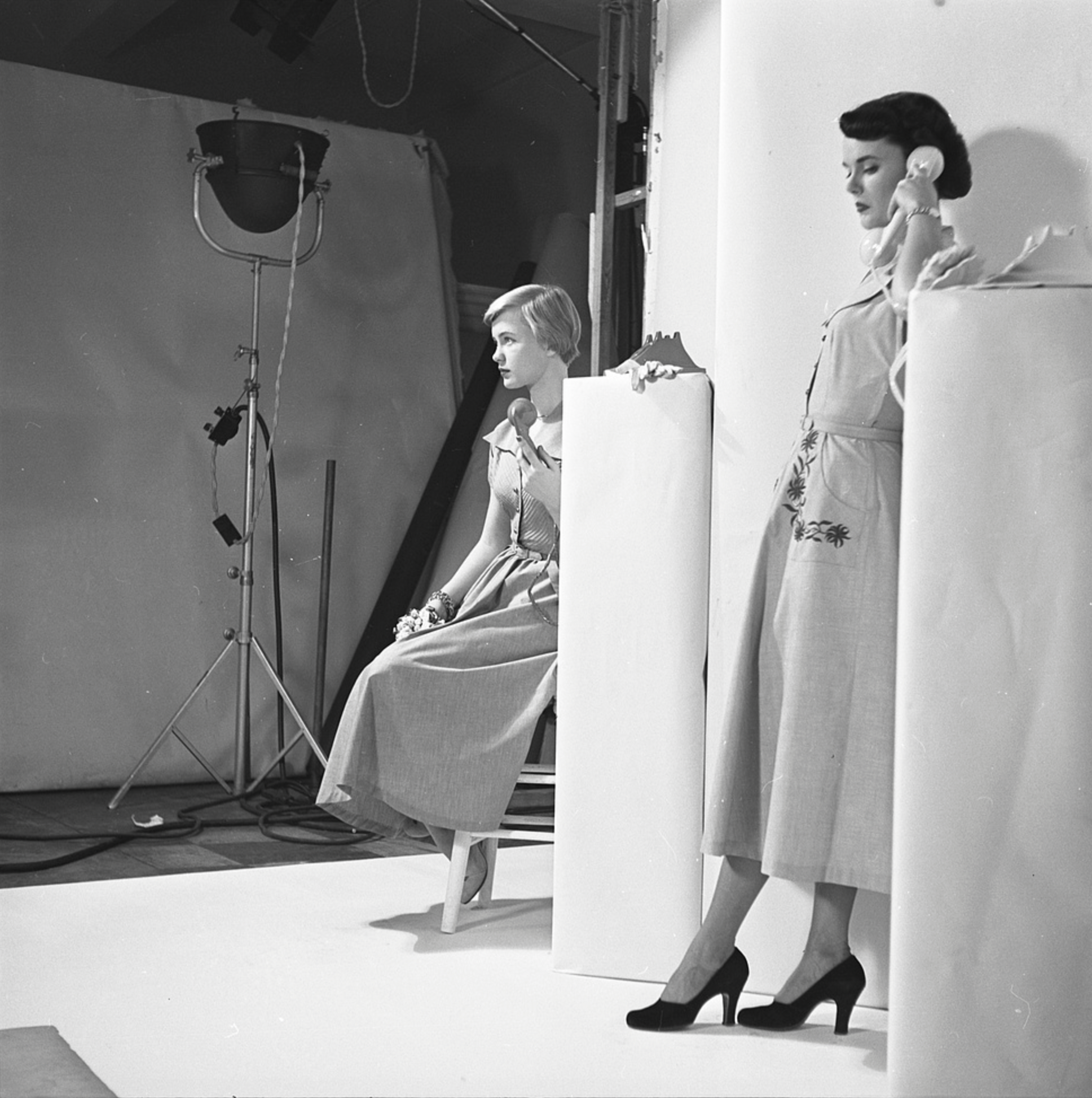
“American look” by Stanley Kubrick, 1949
Eleanor Lambert, founder of the Council of Fashion Designers of America, also played a massive part in the development of an American Fashion Industry. The Dress Institute hired Lambert to promote American fashion, to find ways to generate newspaper and magazine features about how New York was replacing Paris for fashion. In 1940, both Harper's Bazaar and Vogue published issues devoted to American fashion.
In 1943, according to The Huffington Post, Lambert “conjured the event as a scheme to overthrow Paris as the world capital of fashion,” an event that became America's first fashion week. Though only 53 of the 150 fashion writers invited bothered to attend, it was the beginning of systemic change, and the change came quickly.
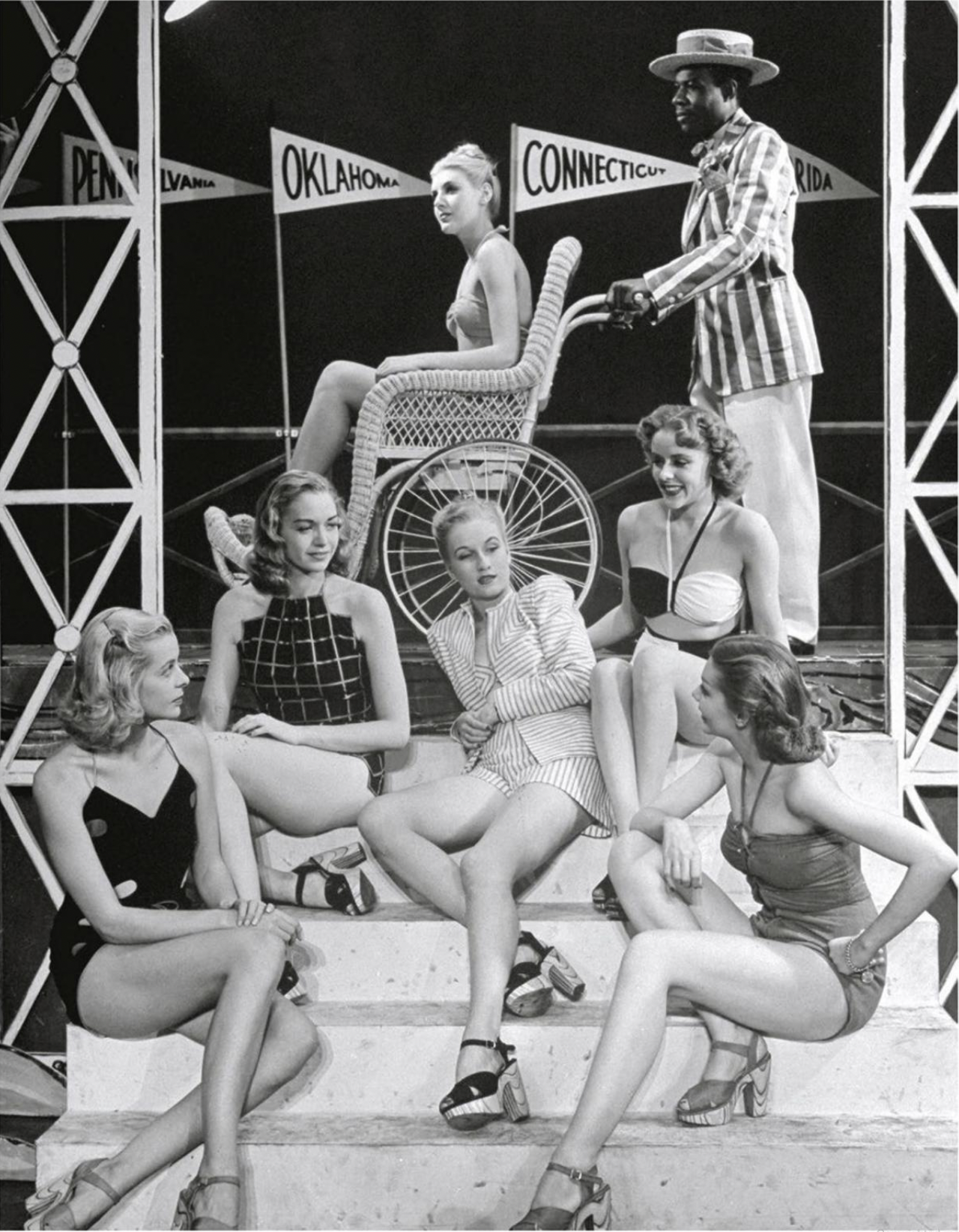
The New York Times 'Fashion of the Times' show, circa 1944
In its May 21, 1945 issue, LIFE Magazine addressed the issue directly, looking to define specifically what made American fashion new, different, and exciting for the active, modern woman:
“What precisely is the American Look? In a current campaign to promote American fashions, Dorothy Shaver, first vice president of Lord & Taylor, New York department Store, has tried to answer this question. The American Look involves many things- a natural manner, freshness and enthusiasm, a friendly smile, an easy, confident stride with head held high, an unaffected elegance in make up and dress.”
America became its own fashion center, drawing a massive share of the global fashion economy.
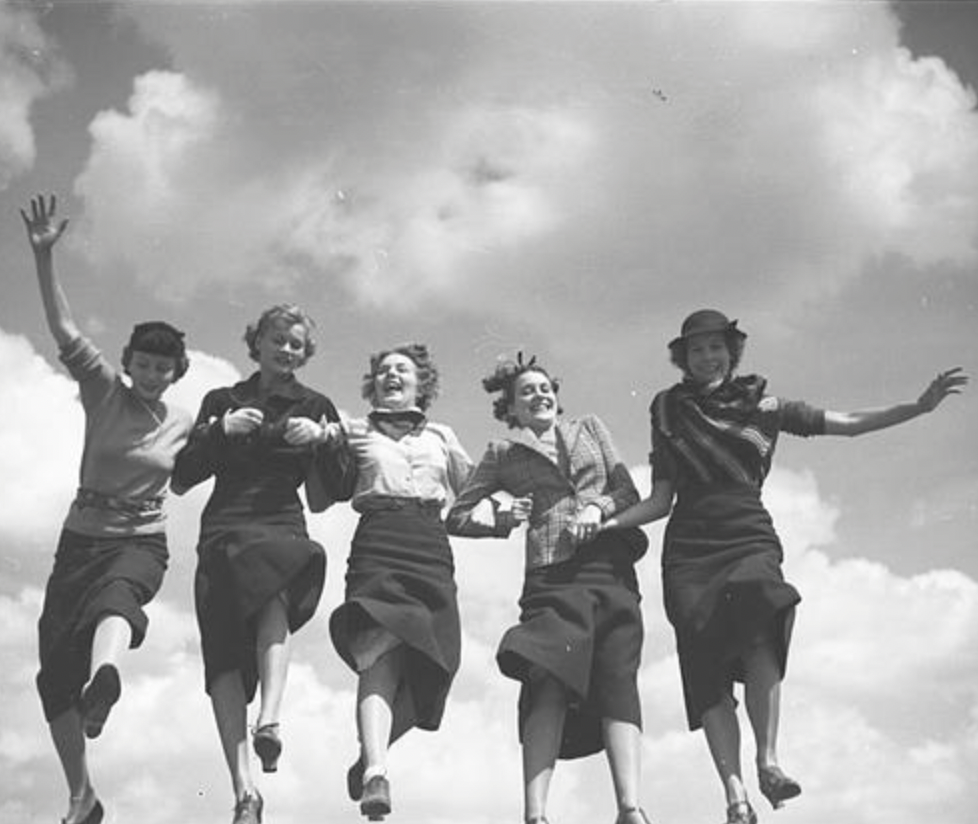
"Five Girls Jumping" by Toni Frissell, 1935.
Since 2018 fashion historian Rachel Elspeth Gross has run her popular blog, Today’s Inspiration, about the history of high-end fashion design. Drawing more than 40,000 individual readers every day; Rachel’s ever-growing audience includes some of the biggest names in Fashion, Haute Couture, Fashion Journalism, and Fashion History academics. Her work has been featured in Women’s Wear Daily, the New York Times, Italian Harper’s Bazaar, and The National News; writes for The Vintage Woman magazine.
A formally trained designer in her own right, in her spare time Rachel recreates 19th century ball gowns from scratch.
REFERENCES:
Hawes, Elizabeth (1938) Fashion is Spinach. Random House, New York.
Miller, J. Howard (1942) "We Can Do It!" National Museum of American History.
Author Unknown. (Oct. 5, 1944) Stage Show to Mark 'Fashions of The Times' With 40 Designers Cooperating in Work. The New York Times.
Editors of LIFE (May 21, 1945)What is the American Look? LIFE Magazine.
Martin, Richard; photographs by Karin L. Willis (1998)American ingenuity : sportswear, 1930s-1970s. The Metropolitan Museum of Art, New York
Stanfill, Sonnet (2007) New York fashion. Victoria & Albert Museum, London.
Diliberto,Gioia (Nov. 9, 2009) Eleanor Of Seventh Avenue: Where Fashion Week Came From. Huffington Post. (accessed May 15, 2022.)
History.com Editors (July 21, 2010)1944, August 25: Paris is liberated after four years of Nazi occupation. A&E Television Networks. (accessed May 15, 2022.)
Cokely, Carrie L. (Feb 25, 2016) Rosie the Riveter. Britannica.com (accessed May 15, 2022.)
Cowles, Charlotte (Apr. 15, 2016)How Fashion Legend Bonnie Cashin Broke Into Bazaar. Harper’s Bazaar. (accessed May 15, 2022.)
Moore, Booth & the CFDA (2018) American Runway: 75 Years of Fashion and the Front Row. Abrams.
Knopp, Larissa Marie (2020) The Business of Fashion: Fashion Group International, 1928-1997. St. John's University.
Do you like this series? Let us know, as there are stories about the emergence of the many nations which today enjoy the spotlight of the global fashion stage.
SOME FUN FACTS:
- In 1938 Hawes published “Fashion Is Spinach,” a literal MUST READ for anyone interested in the history of American Fashion.
- Tina Lesser was almost 100 before she stopped working in fashion.
- Clare McCardel became a household name, and today her impact is celebrated on The Fashion Walk of Fame.
- Maxwell designed the jumpsuit famously portrayed in the Rosie the Riveter poster by J. Howard Miller in 1942.
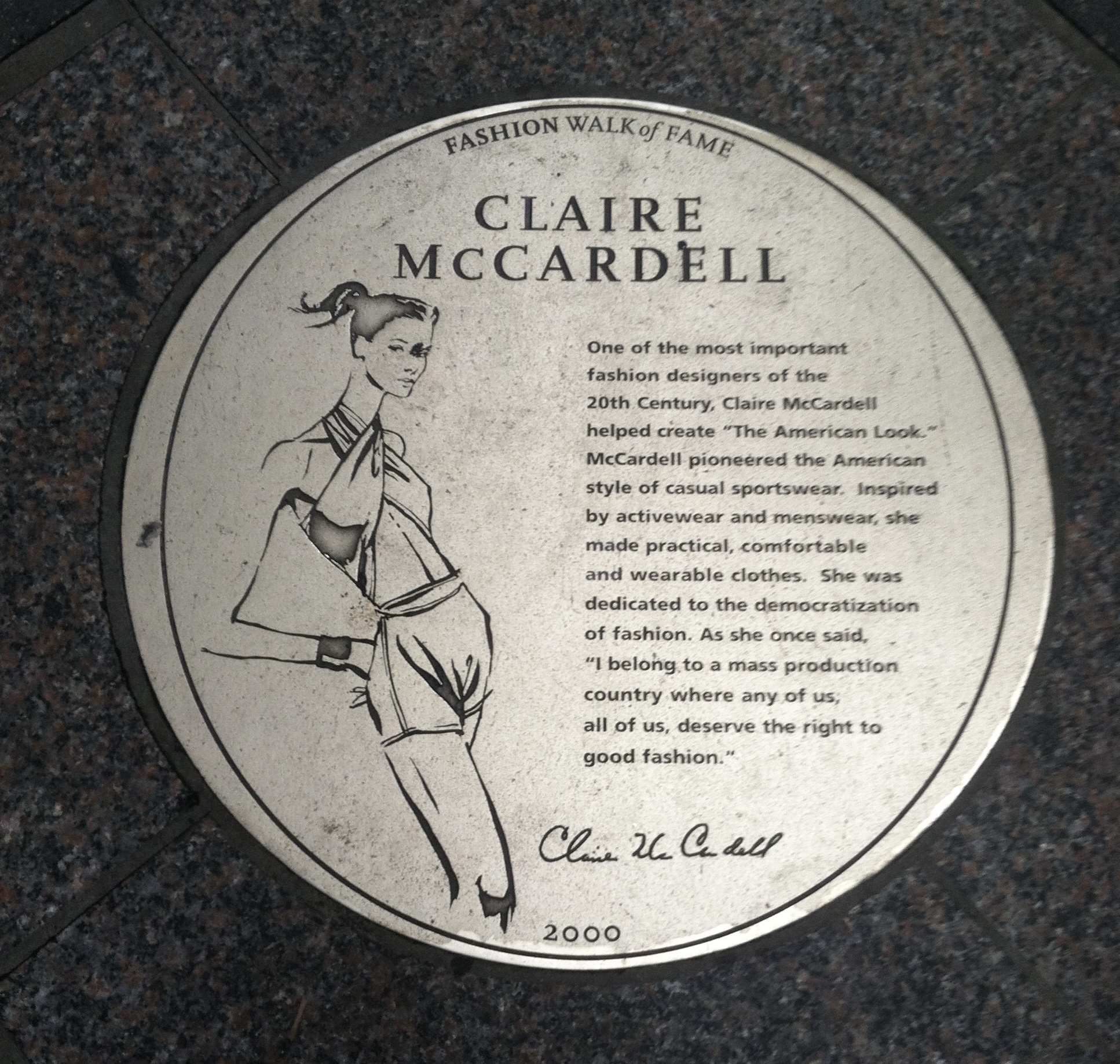
Claire McCardell plaque on the The Fashion Walk of Fame.
